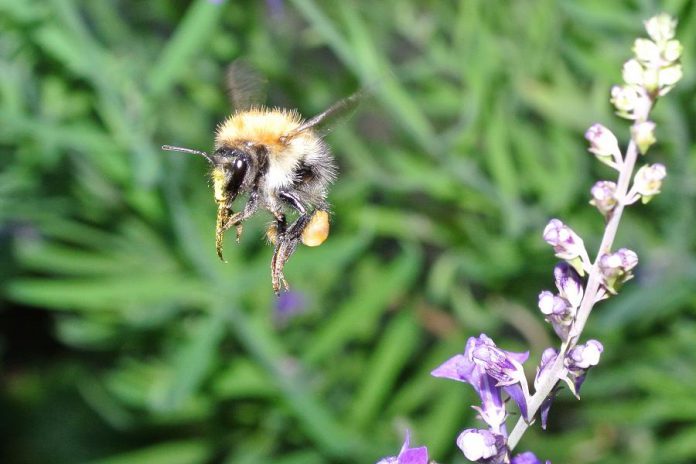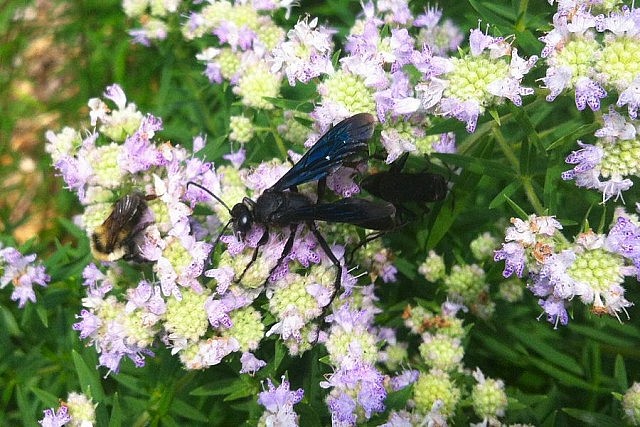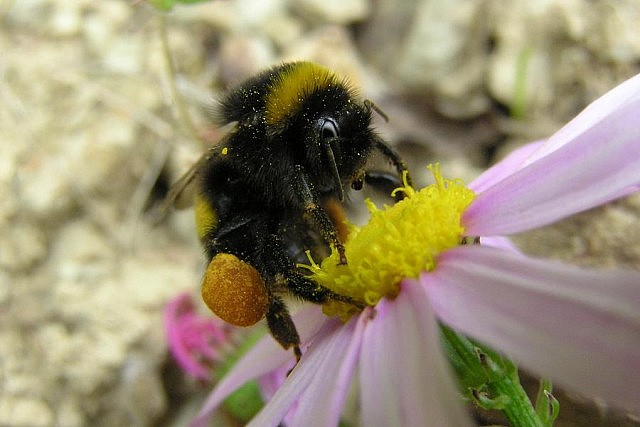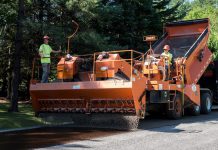
It’s all the buzz lately — pollinators are a hot ticket topic! Major media are covering stories about bees in our cities, with stories popping up in the news almost daily. There certainly are some exciting ways that we can bring biodiversity to our urban centres; learning how to live with and appreciate bees as our neighbours is an important first step.
Take the bumblebees in your backyard. for example. Did you know that there are 45 species of bumblebees in Canada and that they make their homes underground? If you see a bumblebee, it likely lives very close to where you spotted it. Most bumblebees make their homes within the surrounding 500 metres of their foraging area — which means around your house, school, or workplace.
Take a few moments this spring to see if you can follow a bumblebee back to its home: through tiny cracks in the pavement, abandoned rodent holes, or in dried patches of soil. These important insects provide one of our most important services — pollination.
Bumblebees are known as critical pollinators and yet, even with their decline in numbers, they have not received the same amount of attention as honeybees. Bumblebees are in trouble too! It has been reported that four once-common widespread Bombus (bumblebee) species have vanished from large portions of their former ranges in North America. A fifth may already be extinct. Scientists are seeing similar losses in Europe, South America, and Asia.
Peterborough is home to hundreds of species of native bees and managed honeybees. Helping bees means making a few small changes, which will actually lessen the work you have to do in your garden!
1. Provide pollen and nectar for food
Bees are active from early spring through late fall and need access to a variety of nectar and pollen-producing flowers blooming at different times throughout these seasons.
Native plants are best because they require less maintenance and they have co-evolved with native bees providing a reliable source of nectar and pollen. Many non-native plants and cultivars have been bred for their showy blooms but do not provide an adequate food source for bees.
If you grow food, allow a few bean, pea, lettuce, and brassica plants to go to seed — providing food for bees and also providing future food for you.

2. Ensure bumblebees have nesting sites
Bumblebees, like honeybees, are social insects that live in colonies containing between 50 and 500 members.
Most bumblebee species nest underground, usually in abandoned holes created by ground squirrels, mice, or rats. Others nest aboveground in abandoned bird nests, grass tussocks, or cavities such as hollow logs.
Help bumblebees by providing as many of these habitat features as possible. You can also minimize practices such as mowing and tilling that can destroy nests and potential nest sites.
3. Eliminate pesticides
Avoid insecticides, which kill insects directly, and herbicides, which kill the plants bees depend on.
Beware of products that promote exclusive riddance of nuisance insects in your garden; most of these products also harm beneficial insects, such as bees.
In particular, steer clear of neonicotinoids, which are taken up by the vascular systems of plants. This means that bees feeding on pollen and nectar will be exposed to powerful poisons long after the chemicals have been applied.

4. Provide overwintering habitat
In late fall, bumblebee colonies die, leaving behind only new queens, who will hibernate during winter and emerge the following spring to form new colonies. Most queens overwinter in small holes just below or on the ground’s surface.
Queens living in yards and other human-dominated landscapes may seek shelter in sheds, rock walls, and woodpiles. Leaf litter, downed wood, and uncut grasses left in place over the winter will provide additional options.
When spring arrives, avoid raking or mowing until April or May to protect hibernating queens.
5. Help scientists study bees
Many bumblebee species are declining, particularly important pollinators of crops and native plants.
You can help scientists learn more about insects by reporting bees you see in your garden to the citizen-science project Bumble Bee Watch at www.bumblebeewatch.org.
6. Learn and celebrate bees with others
GreenUP and the Ontario Beekeeping Association offer short and seasonal educational opportunities to gain hands-on experience with honeybee hives. GreenUP has started a Community Bee Keeping Program — you can get registered and get involved this spring.
Also check out Peterborough Pollinators at www.peterboroughpollinators.com, a local community group whose vision is to work together to cultivate a resilient environment for local pollinators.
For more information on how to register for the Community Bee Keeping Program, Ecology Park hours, workshops and events, the plant catalogue and price list, visit www.greenup.on.ca or contact Marcy Adzich, Manager of Landscape and Ecology Programs, at marcy.adzich@greenup.on.ca or 705-745-3238 ext. 212.


























